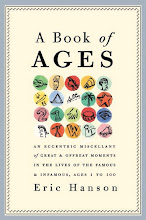On May 3, 1810 Lord Byron swam the Hellespont, the channel separating Asia and Europe, not far from the buried ruins of ancient Troy. It took him an hour and ten minutes. He'd failed on his first try, having misjudged the currents. In the legend Leander crossed it so he could sleep with his beloved Hero. Byron did it so he could write letters home about it. He wrote many of those, as well as a famous poem. He was 22 and just beginning to write his own legend.
Byron was the first great literary celebrity. Aristocratic, talented, scandalous, handsome, competitive to a fault, self-promoting, larger than life. Far too outsized for proper London society, which is why he spent most of his adult life on the Continent. He had a troublesome habit of falling in love with married women. In 1812 he had his famous affair with Lady Caroline Lamb. It was Lady Caroline who described Byron as "mad, bad and dangerous to know."
In several ways he is the perfect hero for a book like mine. The word Byronic describes a certain kind of man, young, ambitious, poetic, dangerous, daring, romantic and a bit doomed. Byron died young while taking part in a revolution in Greece. He presided over the Viking funeral of Shelley on the Italian coast. He proposed the storytelling contest that resulted in Mary Shelley's Frankenstein. Half Peter Pan and half Odysseus, he is the prototype for millions of young men since, and several others described in the book: Bruce Chatwin, Dylan Thomas, Oscar Wilde, Hemingway, Fitzgerald, Kurt Cobain, John Lennon, Mick Jagger.
Byron appears on pages 21, 61, 66, 76, 77, 95, 117, 128 and 130 in A Book of Ages.
Sunday, May 3, 2009
Lord Byron swims the Hellespont
Labels:
"mad,
bad and dangerous to know",
Hellespont,
Hero,
Lady Caroline Lamb,
Leander,
Lord Byron,
Troy
Subscribe to:
Post Comments (Atom)





No comments:
Post a Comment